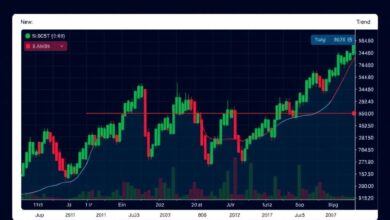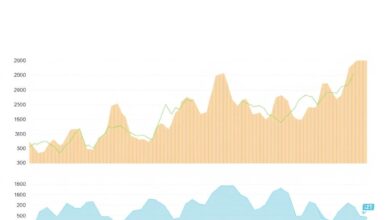How to invest in international markets from home

Choose a reputable online broker that offers access to diverse foreign markets, enabling you to trade stocks across various economies. This approach not only diversifies your portfolio but also mitigates risks associated with local market fluctuations.
Research is key; utilize resources such as financial news platforms, market analysis tools, and economic reports specific to the countries you’re interested in. Understanding local regulations, currency fluctuations, and economic indicators will empower you to make informed decisions.
Begin by identifying sectors that are thriving internationally–technology, renewable energy, or healthcare often present lucrative opportunities. Focus on companies with strong fundamentals that can withstand global uncertainties while offering growth potential.
With the right strategy and tools at your disposal, investing in stocks abroad can be an accessible avenue for wealth accumulation without leaving your comfort zone.
Choosing the Right Platforms
Select a platform that offers access to diverse foreign stocks and facilitates global investing seamlessly. Here are key factors to consider:
- User Interface: A clean, intuitive interface simplifies trading and research processes.
- Fees and Commissions: Analyze transaction costs to ensure they align with your investment strategy. Low fees can enhance long-term returns.
- Asset Range: Opt for platforms providing a broad selection of foreign markets, including emerging economies, to enhance diversification.
- Research Tools: Robust analytical tools and educational resources help in making informed decisions about foreign stocks.
- Customer Support: Reliable support can assist you during critical trading moments or technical issues.
A few reputable platforms include:
- Interactive Brokers: Excellent for experienced traders, offering extensive international market access and low fees.
- E*TRADE: User-friendly with solid research tools; suitable for both beginners and seasoned investors.
- TDAmeritrade: Comprehensive educational resources; ideal for those seeking to deepen their understanding of global investing.
Your choice should reflect your individual investment goals and risk tolerance while maximizing opportunities across various foreign markets. Prioritize platforms that align with your needs for an optimized investment experience.
Understanding Currency Risks
To mitigate currency risks, consider using an online broker that provides access to hedging tools. These can help protect your portfolio from adverse movements in exchange rates while holding foreign stocks.
Currency fluctuations can significantly impact the value of your investments. For example, if you own shares in a European company and the Euro depreciates against your home currency, the returns may diminish even if the stock performs well locally.
Diversification across different currencies is crucial. By investing in assets denominated in various currencies, you spread out potential risk. This approach not only enhances resilience but also opens doors to new opportunities globally.
Keep an eye on economic indicators that influence currency strength, such as interest rates and inflation. Understanding these factors allows for better predictions regarding currency movements and helps tailor your investment strategy accordingly.
Regularly review your portfolio’s exposure to currency risk. Tools provided by many online brokers enable you to assess how much of your investment is affected by exchange rate changes, allowing for timely adjustments when necessary.
Lastly, consider consulting with financial advisors or utilizing resources offered by trading platforms to deepen your understanding of currency dynamics and their implications for global investing.
Diversifying Your Portfolio Globally
Allocate at least 20% of your investment capital to foreign stocks. This strategy mitigates risk and enhances potential returns. Focus on emerging economies like India and Brazil, where growth rates often surpass those of developed nations.
Consider sector-specific ETFs that provide exposure to various industries across different continents. For example, technology funds concentrated in Asian markets can offer substantial upside due to rapid innovation in that region.
Incorporate a mix of developed and developing nations into your asset allocation. Countries such as Germany and Japan present stability, while regions like Southeast Asia can yield higher volatility but greater rewards.
Utilize tools for tracking international indices such as the MSCI World Index or FTSE All-World Index. These benchmarks provide insights into how global stocks are performing relative to each other, assisting in better decision-making regarding diversification.
Monitor currency fluctuations, as they can significantly impact your returns on foreign investments. Hedging strategies may be beneficial if you’re heavily invested in currencies facing uncertainty or instability.
Aim for a balance between growth-oriented stocks and dividend-paying equities within your global portfolio. This combination ensures that you not only benefit from price appreciation but also receive income even during market downturns.
Finally, regularly review your allocations and adjust based on changing market conditions and personal financial goals. Stay informed about geopolitical events that might affect specific regions or sectors, ensuring your investments remain aligned with your overall strategy.
Researching Foreign Market Trends
Utilize online resources like Yahoo Finance or Bloomberg to track global stock performance and emerging trends. Focus on sector-specific reports that highlight opportunities across different regions.
Identify economic indicators such as GDP growth rates, unemployment statistics, and inflation figures. These metrics provide insights into the health of foreign economies and their potential for investment returns.
Engage with financial news platforms and subscribe to newsletters that focus on international developments. This keeps you informed about political changes, trade agreements, and technological advancements that could impact stock valuations.
Leverage social media platforms like Twitter or LinkedIn to follow industry experts and analysts who share real-time insights. Their opinions can help shape your understanding of market sentiment and investor behavior.
Consider using an online broker that offers access to research tools tailored for global diversification. Many platforms provide analytical resources that compare stocks across countries, allowing for informed decision-making.
Monitor currency fluctuations closely; they can significantly influence the profitability of foreign investments. Tools like XE Currency Converter can assist in tracking exchange rate movements over time.
Create a watchlist of international stocks based on your research findings. Regularly review this list to stay updated on performance trends and adjust your investment strategy accordingly.







